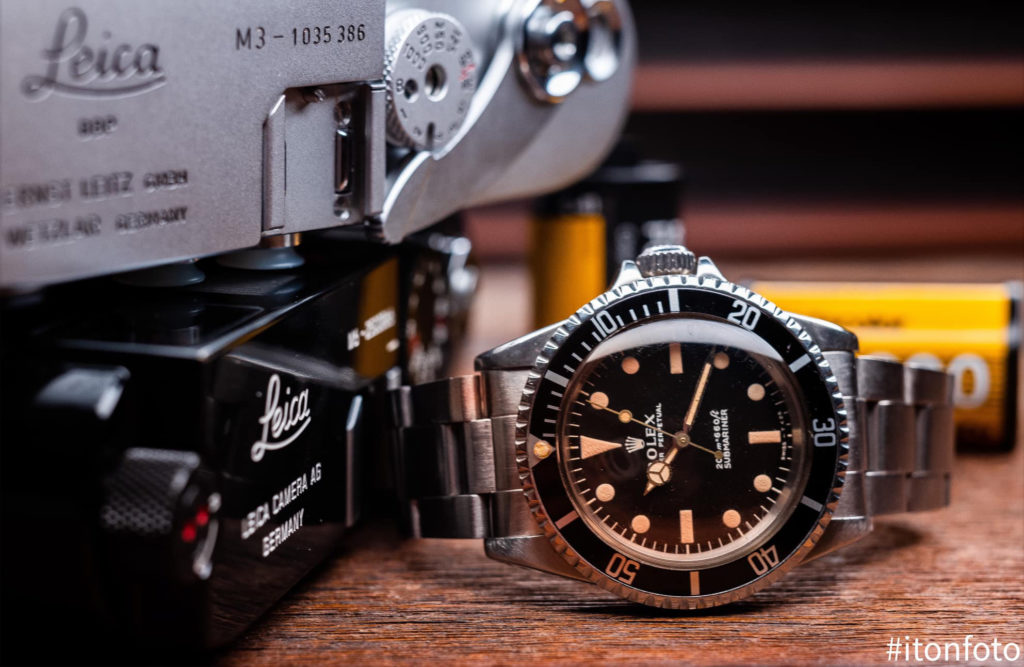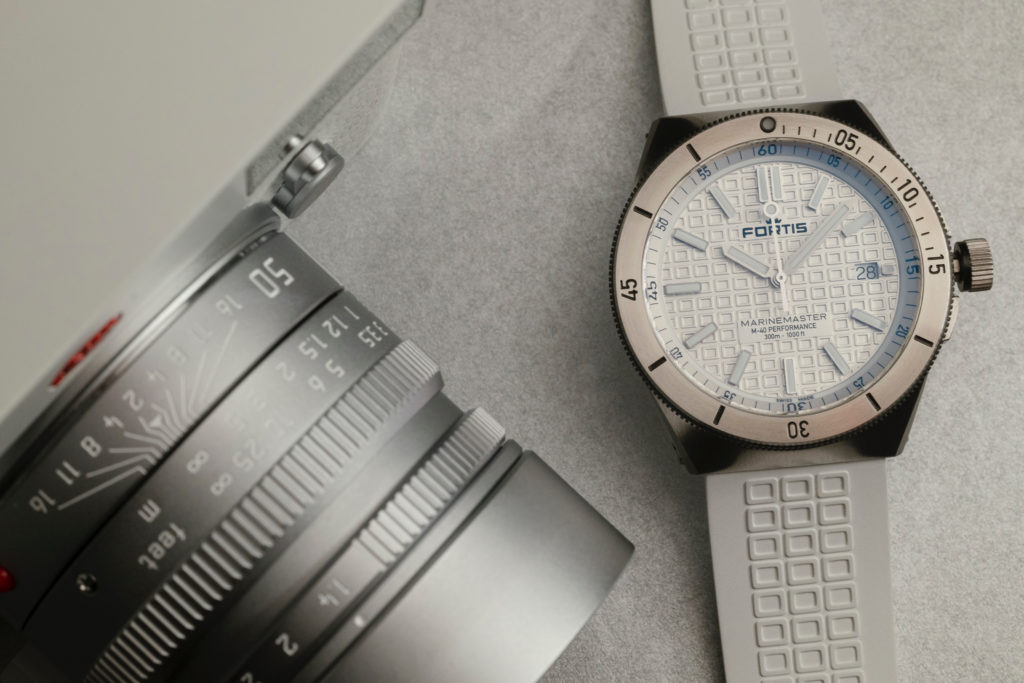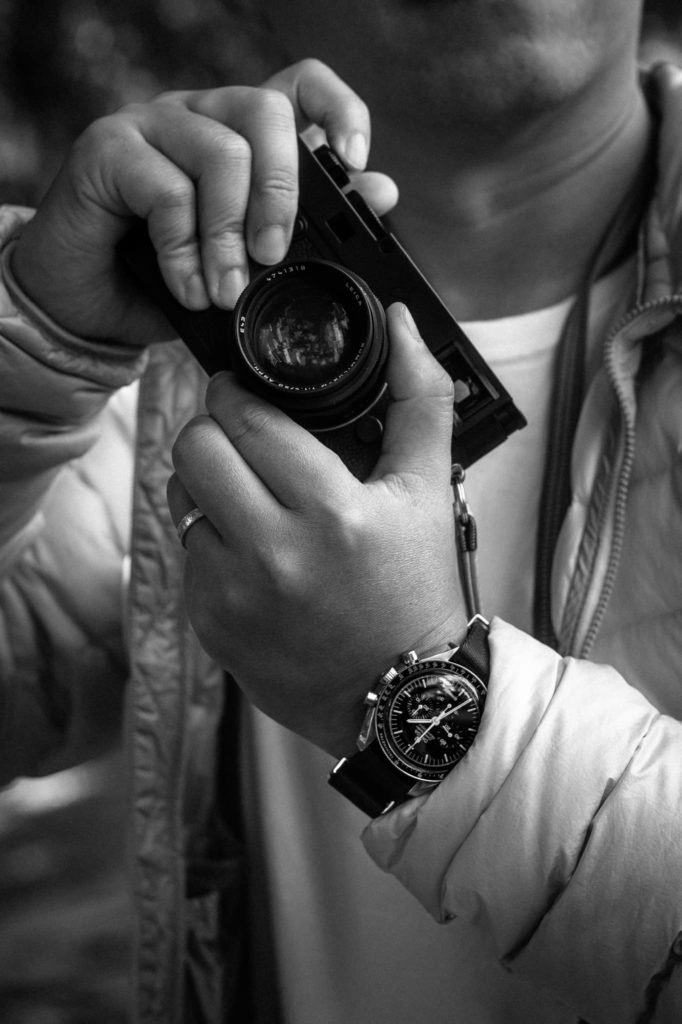If you don’t understand Leica, Leica cameras and/or the people who use them, this article might help. If you are Leica averse, I have little hope that I can sway you to our side but perhaps you can at least appreciate, from a distance, what the Leica enthusiasm is all about.
Even better, I hope to explain why much of the criticism you see in camera forums, on social media, and more importantly, my inbox, misses the point and falls on deaf ears. If this article is even partially successful, you will understand why comments like “my Fuji is just as good as your Leica for 1/4 the price” or “professional photographers don’t shoot Leica cameras” makes about as much sense as treating pubic lice with Pepto Bismol.
To understand Leica, start with luxury goods
If you think luxury goods and/or collecting watches, sneakers, records, baseball cards, and/or Transformers action figures is wasteful, you are welcome to your opinion but it is possible that you are in the minority. More people than you think are into luxury and collecting. The luxury goods market is estimated to be 269 billion dollars strong. People like nice things.
It may be of interest to note that although I am a card-carrying, flag-flying, Leica, fanboy my love of luxury goods starts and ends with watches and cameras. I completely understand where you are coming from if you don’t want to participate. I drive a scooter and choose to go grocery shopping at Wal-Mart. I recoil at horror at the idea of Belenciaga crocks because stepping in dog poop with $1000 crocks is asinine.
(Above image used with permission by Arnat Beavis)
Luxury watches are the gateway to your understanding Leica cameras
The luxury watch market is huge. As a metric, if a popular photographer influencer has 154K subscribers on YouTube, a similarly positioned watch influencer might have 806K subscribers. You might like cameras but many more people like watches.
If you don’t do social media metrics, the luxury watch market is estimated to be 73.56 billion while the camera market is estimated to be 3.2 billion. Again, the numbers aren’t even close.
I would venture to guess that the majority of people who enjoy luxury watches will tell you WITHOUT A HINT OF IRONY that wristwatches make zero functional or logical sense in 2022. Exactly nobody on the planet needs a watch given that nearly every one of us has a cell phone with a perfectly functioning clock in our pocket. Moreover, watches that serve no functional purpose, and cost tens of thousands of dollars, don’t keep time as well as your phone. +/- a few seconds per day is generally acceptable for a mechanical watch.
Logic or functionality, therefore, fail to explain the popularity of luxury watches. In fact, watch enthusiasts care little that your cell phone keeps better time than their watch because keeping time isn’t the point. For Leica enthusiasts, using a Leica camera to make pictures isn’t the point either. Therefore, when Leica critics say things like “the images from my Canon R5 are as good as a Leica” or “My Sony G master lens is as good as a Leica Summicron” those statements don’t make sense because they miss the point of shooting with a Leica camera.
For Leica owners, the pictures, image quality, feature set, etc. are only a starting point for discussion. Image quality and functionality are important but not the metric for success.
(Above image used with permission from the guys at Camera West’s new venture CW Watch Shop)
So what is the point of a luxury watch (and a Leica camera or lens)?
Luxury watch enthusiasts are not shy about telling you that they love their watches and keeping time has little to do with the appreciation of their hobby. In the introduction to the book “Watches. A Guide by Hodinkee,” the authors state that a fascination with the inner workings of a watch, a love of fashion rather than function, status symbols, tokens of love, tokens of achievement, family heirlooms, collectibles, and a store of wealth are all reasons people enjoy luxury watches. Keeping time isn’t mentioned as a reason people collect or enjoy watches.
Watch nerds feel no shame in saying that they like cool, interesting, well-made, and oftentimes expensive stuff solely because they enjoy them. Photographers cant get there with their gear. I think they have a lot to learn from the watch world.
Photographers seem burdened by a sense of shame for enjoying cameras and/or collecting cameras and lenses as a hobby. They seem to feel a pressure to create imagery and compare their photography with others in order to justify enjoying using and/or owning cameras and lenses. The shame of owning multiple sets of cameras, for some, is too much to bear.
Watch enthusiasts don’t seem to have any sense of shame associated with their hobby. In fact, the hobby is an interest in watches and watch collecting – Full Stop. They don’t have to do anything with them but appreciate them and wear them from time to time. The Ephemeral Machine podcast explored this for a while and made a solid attempt at separating the art of camera collecting and the enjoyment of cameras for the sake of cameras from the art of making photographs. The I Dream of Cameras podcast also offers a weekly therapy session and gives a voice to some who might be overwhelmed by shame for their hobby.
Although I can only speak for myself and the number of Leica enthusiasts, collectors, and fanboys (I don’t know any fangirls) that have opened up to me over the years, many of us feel approximately the same way as watch enthusiasts feel about watches. Unfortunately, most photographers (except me anyway) use opaque language to describe what we are doing.
I call it “playing cameras and lenses” but I am also a boorish heathen that (somewhat) proudly owns Molly Hatchet, Manowar, and Judas Priest records. Everyone else talks about a connection with their Leica camera, describes how a Leica camera gets out of their way, how a Leica camera slows them down, and all of the other tropes that we associate with mechanical cameras.
What you don’t hear from Leica enthusiasts all that often is that the main reason they use a Leica is that they like the way the camera feels, they like the weight, the heritage, the sound of the shutter, and/or the buttery smooth way the film advance lever feels. You never hear anyone come right out and say that cameras covered in kevlar or dead snakes are approximately 4000x cooler than vulcanite clad cameras . They also don’t say that kevlar and dead snakes are perfectly good reasons for wanting to buy a camera yet we all know 1) it is true and 2) special editions are irresistible.
Importantly, you also never hear from Leica enthusiasts that the only reason they use a Leica is because Leica cameras make photos that cannot be made with any other camera. That is dumb and we all know deep down that makes as much sense as saying a watch collector needs a Royal Oak to know what time it is. Luxury watches (and microbrands for that matter) are about more than keeping time. Using and owning a Leica camera is about more than taking pictures. That is the point.
As an example from my world, when I was working on my Lost Dogs book, my Leica M10 routinely became a point of discussion with the people in the bar and it opened up a relationship after which they allowed me to photograph their shoes and pets. The book was ultimately about San Diego shoe culture and locals as much as it was about the dogs.
Further, some of the models we work with also react positively to the Leica because they know the brand and feel that it is important. Sometimes, just feeling the weight of the camera and using a manual focus lens and rangefinder for the first time, is impressive and gets people activated. Activated subjects make better pictures. Finally, at the skatepark (where everyone knows French Fred) Leica has meaning. It tells the skaters (and the skate dads) that I am more than just a creeper, creeping around the skate park doing creepy skate park photography things.
In my experience, the Leica camera is often part of the show and it doesn’t matter if your Fuji can make a similar picture for 1/4 the price. I know with 100% certainty that I can make approximately the same images with a Minolta Dynax 5 as I can with my M7 but nobody in their right mind wants to play cameras and lenses with a Dynax 5. The pictures might be nearly the same but the experience is different and THAT is the point.
Watch enthusiasts are collectors as are many Leica enthusiasts. This is where the critics lose their mind.
This whole luxury watch business is even more interesting (or insane) when you realize that people who own luxury watches own, on average, 15-30 watches.
Leica critics (at least the ones who contact me) seem to lose their mind when I say I use Canon, Fuji, and Leica cameras for work and own and use any number of film cameras in addition to my M7. Rangefinder cameras are not the best cameras for every situation. Critics can’t seem to get past the fact that given the cost of a Leica camera, it should be the only camera someone needs to own. This misses the point.
From my vantage point, a Leica camera is best used when it is appropriate. It might be something to bring to a family gathering or a Beers and Cameras meetup. It might be something you bring to a shoot as a conversation piece. It might be something that you use day to day as a wedding photographer or documentary style journalist but a Leica camera isn’t always the best tool for all situations. You wont be shooting action sports with a rangefinder if you can avoid it. You wont be shooting a rangefinder with a 400m lens if you can avoid it. There is no shame in owning a Leica camera and bringing something else to your kids soccer game.
Similarly, the luxury watch enthusiast probably won’t bring their Glashütte (Nomos or Original) on a goat herding expedition in the Himalayas. They also wont run upstairs and grab their speedmaster when they need to set a timer for the chicken in the oven. A watch enthusiast feels no shame for using an oven timer. There is also shame for a Leica enthusiast using a Fuji.
This is why statements like “only doctors shoot Leica cameras and professionals don’t” is directionally accurate but isn’t a criticism. If a professional photographer had all of the money in the world they they would probably own a Leica but they probably wouldn’t shoot a Leica as their only camera system or take it backcountry skiing.
For the Leica enthusiast, there is no shame leaving the Leica home from time to time or even most of time. My Nikon FM3A or F6 often find their way into my bag while the M7 sits home on a shelf and I don’t think twice about it. The M7 makes a cameo at the end of the video but it wasn’t the right tool for the job.
In defense of the Leica critics
If you are a Leica critic and you are still confused about why anyone would buy a Leica, it is possible that Leica marketing has something to do with it.
Luxury watch vendors have it easy. All they need to do is sponsor a Formula 1 team, give a few watches to Sarena Williams and Lewis Hamilton, and talk about heritage. A trip to the moon is always good for sales. In fact, we would all be scratching our heads wondering what watch manufacturer were doing if luxury watch brands focused on features and how well their watches kept time compared to an iPhone.
Leica isn’t as fortunate as Rolex. They can’t just come out and say “Buy Leica cameras because deep down you are just a caveman who likes heavy, metal, things that go clicky clacky and look cool because we were there in 1925.” You can’t just say that in photography.
Leica is in the unenvious position to have to do what Bremont, IWC, Bell and Ross, and the other Formula 1 sponsors don’t have to do – Leica has to focus on features in their marketing and it is confusing for the photographer trying to make sense of why someone would spend $8000 on a Leica camera. This clearly confuses the YouTubers who are always focusing on features even though features are the starting point for discussion. Features are not the end game (1).
Bottom line
Leica is a much about shooting a Leica camera as it is playing cameras and lenses and that is not a criticism. Wearing a Luxury watch is about wearing a Luxury watch. Don’t misunderstand what I am saying. Leica cameras are great cameras. Full stop. Features are a starting point for discussion but features are not THE point. Comparing Leica to other brands based on features and technical specifications alone doesn’t make sense. It misses the point entirely.
Sometimes I wish Leica and Leica enthusiasts had a different language to discuss what we love about the cameras. The status quo is confusing for the camera world because the camera world is designed to speak one language while our language has more in common with watch collectors than other photographers.
We have a lot to learn from the watch world.
P.S. I went full fanboy here. If you are a critic, Leicaphile who doesn’t want to admit that somewhere deep in there you are a caveman chasing shiny things just like I am, or you are a watch person whose hobby just got denigrated by a photographer, please don’t vomit in your mouth or shoot the messenger. If it helps, when I go full fanboy like this I puke in my mouth a little bit too. It is what it is.
NOTES
1. This discussion somewhat falls apart with the Leica SL series cameras and lenses. Unlike an M camera, with the SL, the features really are the point. It is a great camera and, perhaps, the best mirrorless camera for adapting M lenses but if your goal is a fully featured mirrorless camera, that critics might be right when they criticize the SL as an overpriced mirrorless camera. I went deep (deep deep) down the SL road and even though I am a fanboy and I hate to admit it for a number of reasons, I could not justify the purchase for my business. The real issue is that I wouldn’t take a camera like that on vacation or for personal use. I tried to make an SL work. I really tried. In the end I couldn’t get myself there because….features.
Above image used with permission by Raymond Chak
Header image used with permission by John Low
Disclosure statement: None. This post is not sponsored.





